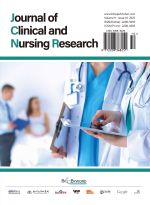Comprehensive Review and Response Strategies for Nipple Confusion
Abstract
The term “nipple confusion” accurately describes the confusion newborns experience between their mother’s nipple and an artificial nipple during feeding. Specifically, it refers to the feeding habits infants develop based on their initial feeding experiences after birth. Infants accustomed to the maternal nipple often resist bottle-feeding; conversely, those accustomed to bottle-feeding may reject the maternal nipple. This confusion is particularly common among infants receiving mixed feeding.
References
Zhao Y, Wang X, 2024, Research Progress on Breastfeeding in Preterm Infants. Chinese Community Physician, 40(4): 4–6.
Wang Z, Wang H, Xiao M, et al., 2018, Analysis of Breastfeeding Status and Nursing Strategies in China. Chinese Journal of Reproductive Health, 29(2): 200–202.
Zhang Y, Ma H, Ren M, et al., 2025, Research Progress on Scenario Simulation in Breastfeeding Health Education. Medical Frontiers, 15(9): 31–34.
Shao M, Luo P, Qin X, et al., 2022, Research Progress on Newborn Sucking Function Assessment Tools. Military Nursing, 39(7): 17–20.
Chen D, 2023, Impact of Infant Health Care on Growth and Development, Nutritional Diseases, and Health Status. Women and Children’s Health Guide, 2(13): 73–75.
Hu H, 2017, Clinical Observation on Combining Finger Training with Bio-Nourishment Method to Improve Nipple Confusion Rate After Maternal–Infant Separation. Everyone’s Health (Late Edition), 11(8): 190–191.
Fang X, Zhang J, 2009, Nutritional Needs and Supply for Mothers and Infants During the Critical Period. Proceedings of the 12th Academic Annual Meeting of the Danone Nutrition Center, 177–180.
What to Do About Nipple Confusion, 2021. Jiangsu Health Care, 2021(11): 32–33.
Deng H, 2020, How to Master Correct Breastfeeding Positions. Proceedings of the 12th Guangzhou Health Education and Health Promotion Academic Exchange. Guangzhou Health Education and Promotion Center, 1.
Bao X, 2019, Baby’s Refusal of the Nipple Is Not the Mother’s Fault. Jiangsu Health Care, 2019(6): 36.


